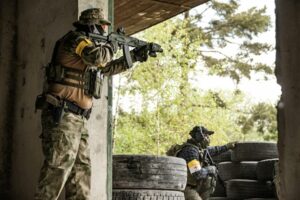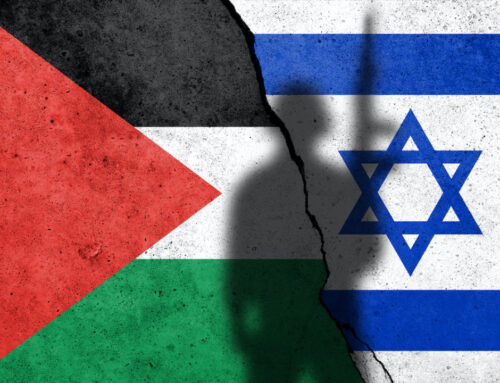
War. A single word that carries the weight of immense human suffering. But beyond the immediate tragedy, war casts a long shadow on the economic landscape, leaving behind scars that take generations to heal. Today, let’s delve into the devastating impact of war on economies, exploring the various ways it cripples progress and prosperity.
Direct Destruction: Imagine Mariupol, once a vibrant port city, now reduced to a wasteland of bombed-out buildings and cratered streets. The Azovstal steel plant, a symbol of industrial might, lies silent, its furnaces extinguished by the flames of war. This direct destruction translates to an estimated $600 billion in damages to Ukraine’s infrastructure alone, crippling its economy and leaving millions displaced.
Mariupol is not the only example. Imagine Hodeidah’s bustling port reduced to rubble, vital food imports disrupted, and millions facing famine. The Saudi-led coalition airstrikes have devastated infrastructure, with the World Bank estimating the total damage to Yemen’s economy at $126 billion.
Let’s talk about the Afghanistan war. Imagine Kabul, its once-bustling markets shuttered, businesses struggling, and unemployment soaring. The Taliban takeover and ongoing instability have led to a severe economic contraction, with the World Food Programme warning of widespread hunger.
The most visible consequence is the destruction of infrastructure, homes, and businesses. Bombs rain down, leaving behind a wasteland where factories once hummed and shops bustled. This physical damage translates to lost productivity, disrupted supply chains, and a collapse in basic services. The cost of rebuilding is staggering, diverting resources away from vital investments in education, healthcare, and development.
Human Capital Drain: War doesn’t just shatter buildings; it shatters lives. Soldiers lost, families displaced, and communities fractured – the human cost is immeasurable. But it also translates to losing skilled workers, entrepreneurs, and innovators. This brain drain stifles economic potential, leaving a void that takes years, even decades, to fill.
Ukraine was once known for its medical education. Today we don’t know what will be future of that country in terms of education. That’s what war looks like. Imagine doctors fleeing with their families, engineers taking up arms, and scientists forced to abandon their research. The war has triggered a mass exodus of skilled professionals, depriving Ukraine of its vital human capital needed for reconstruction and future growth. Imagine a generation of children denied education, their dreams shattered by the violence. The conflict has forced millions out of school, jeopardizing their future and perpetuating a cycle of poverty and instability. Or in the case of Afghanistan, Imagine young women denied access to education and work opportunities, their potential stifled by the Taliban’s restrictions. This brain drain not only impacts the immediate economy but also hinders long-term development prospects.
Uncertainty and Fear: The spectre of violence hangs heavy, creating an environment of fear and uncertainty. Businesses hesitate to invest, fearing future instability. Consumers tighten their belts, unwilling to spend in a volatile climate. This lack of confidence cripples economic activity, leading to job losses and a decline in living standards.
Imagine families living in bomb shelters, businesses unsure if they will open tomorrow, and a constant sense of dread hanging over the nation. The uncertainty fueled by the war has led to a dramatic decline in investment and consumer spending, further crippling the economy. Thats what Ukraine busnes looks like. Imagine the chilling effect of Taliban checkpoints, the fear of reprisals, and the lack of freedom of movement. This climate of fear stifles entrepreneurial spirit and hinders economic growth. If you are not doing business as per talibans view, you will not be permitted to do it.
Inflation and Resource Scarcity: War often disrupts trade and production, leading to shortages of essential goods. This, coupled with the increased demand for military supplies, pushes prices up, fueling inflation. The burden falls heaviest on the most vulnerable, who struggle to afford necessities. Additionally, access to crucial resources like oil and food can be weaponized, further exacerbating economic hardship. The severe drought compounding the economic hardship, with millions facing food insecurity. The war in Afghanistan has disrupted agricultural production and access to essential resources, further exacerbating the crisis. This country is largely depend on UNfood program for survival.
Debt and Dependence: Financing war efforts is rarely cheap. Governments often resort to borrowing heavily, leaving behind a mountain of debt that future generations must repay. This diverts resources away from vital social programs and hinders long-term economic growth. Additionally, reliance on foreign aid to rebuild can create dependence and limit a nation’s sovereignty. The Ukrainian government borrowing heavily to finance its defense efforts, with the national debt projected to reach $80 billion by the end of 2023. This burden will hinder post-war reconstruction and limit future economic development.
Situation in afganisthan is different. The international community grappling with how to provide economic assistance without legitimizing the Taliban regime. This complex situation hinders reconstruction efforts and leaves millions in dire need of support.
The Long Road to Recovery: The economic wounds of war heal slowly, if at all. The scars remain visible for decades, hindering development and trapping nations in a cycle of poverty and conflict. Rebuilding infrastructure, restoring trust, and fostering reconciliation requires immense effort and international cooperation.
Conclusion: War is not just a human tragedy; it is an economic catastrophe. Its impact resonates far beyond the battlefield, crippling economies and dimming the hope for a brighter future. As we strive for peace, let us remember the true cost of conflict, not just in lives lost, but in the shattered dreams and stunted potential of generations to come. Only through understanding the economic consequences of war can we truly appreciate the imperative for peaceful resolutions and work towards a world where prosperity thrives, not under the shadow of violence.

